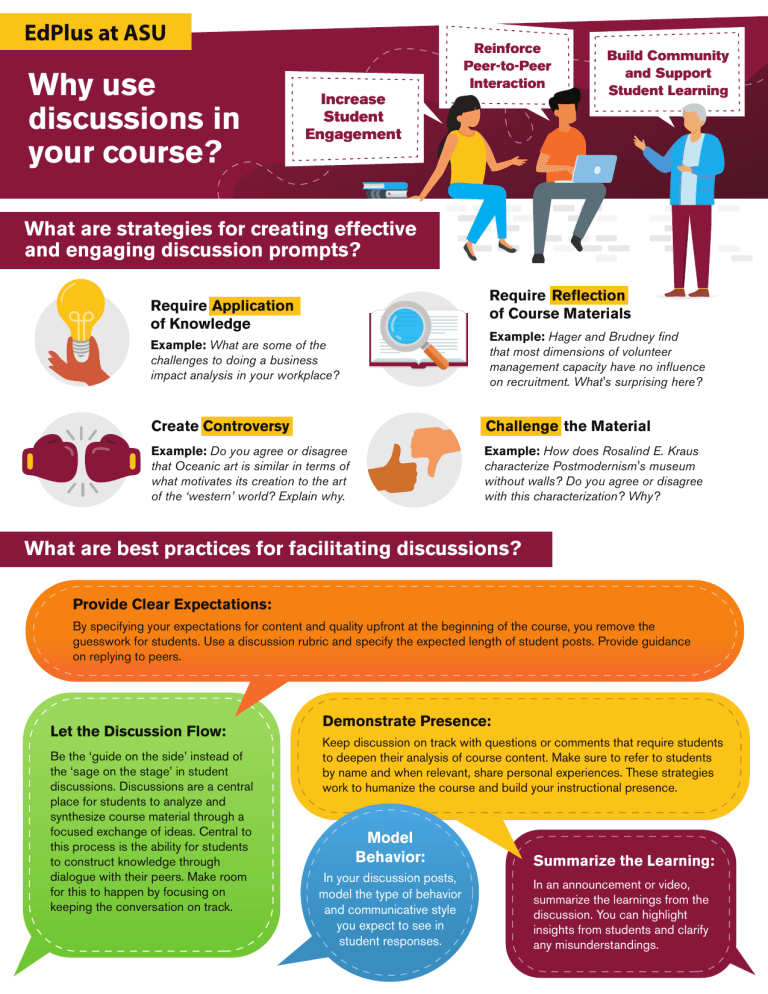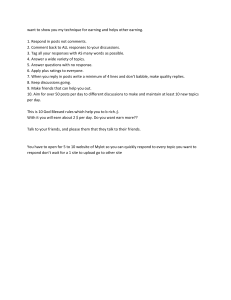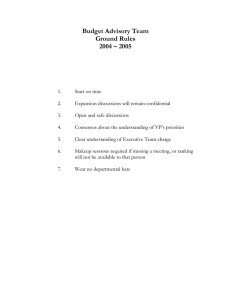
EdPlus at ASU Why use discussions in your course? Increase Student Engagement Reinforce Peer-to-Peer Interaction Build Community and Support Student Learning What are strategies for creating effective and engaging discussion prompts? Require Reflection of Course Materials Require Application of Knowledge Example: Hager and Brudney find that most dimensions of volunteer management capacity have no influence on recruitment. What's surprising here? Example: What are some of the challenges to doing a business impact analysis in your workplace? Create Controversy Challenge the Material Example: Do you agree or disagree that Oceanic art is similar in terms of what motivates its creation to the art of the ‘western’ world? Explain why. Example: How does Rosalind E. Kraus characterize Postmodernism's museum without walls? Do you agree or disagree with this characterization? Why? What are best practices for facilitating discussions? Provide Clear Expectations: By specifying your expectations for content and quality upfront at the beginning of the course, you remove the guesswork for students. Use a discussion rubric and specify the expected length of student posts. Provide guidance on replying to peers. Let the Discussion Flow: Be the ‘guide on the side’ instead of the ‘sage on the stage’ in student discussions. Discussions are a central place for students to analyze and synthesize course material through a focused exchange of ideas. Central to this process is the ability for students to construct knowledge through dialogue with their peers. Make room for this to happen by focusing on keeping the conversation on track. Demonstrate Presence: Keep discussion on track with questions or comments that require students to deepen their analysis of course content. Make sure to refer to students by name and when relevant, share personal experiences. These strategies work to humanize the course and build your instructional presence. Model Behavior: Summarize the Learning: In your discussion posts, model the type of behavior and communicative style you expect to see in student responses. In an announcement or video, summarize the learnings from the discussion. You can highlight insights from students and clarify any misunderstandings.



